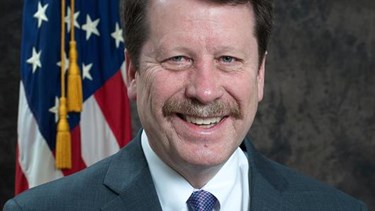FDA Commissioner Clarifies Workforce, Cooperation Goals

Newly appointed FDA Commissioner Robert Califf said his biggest priorities are strengthening the FDA’s workforce and facing new technological challenges in an increasingly global biomedical industry. In a recent blog post, Califf highlighted the FDA’s “ecosystem of partners” and the potential of a connected industry to lessen the expense of clinical research.
Califf was approved by the U.S. Senate in an 89-4 vote in February, despite months of opposition and a number of holds placed by Senators, who expressed their reservations about Califf’s ties to the pharmaceutical industry. Shortly after the confirmation, Califf spoke to the Washington Post to clarify his intended role as FDA Commissioner and the priorities he’d like to set as he takes on leadership of the agency.
Califf reiterated many of the same points in his recent blog post, including his desire to strengthen the FDA’s workforce, which is a key component of his strategy to face an “era of rapid change” and “trends towards globalization.” According to Califf, the agency needs to work harder to attract talent and retain staff.
The FDA seeks to recruit from an increasingly competitive market, in which top minds in both academia and government are being lured by some of the biggest names in technology. Thomas Insel, for example, left his position as director of the National Institute of Mental Health (NIMH) in November to work for Google.
“I strongly believe my most important responsibility during my time in the FDA is to encourage and support a professional environment that enables our remarkably dedicated workforce to thrive and meet its fullest potential,” said Califf.
As another top priority, Califf remarked that he will continue to nurture the development of more effective systems for generating clinical evidence. He cited ongoing programs, such as Sentinel, and the National Device Postmarket Surveillance Plan, recently launched to assure patients and caregivers have up-to-date clinical information about products.
“Biomedical science is nearing a tipping point where the amount of high-quality evidence available to support our decisions is likely to increase exponentially,” said Califf in his blog. By using cloud-based technology and more cooperative data-sharing methods, researchers could increase their pool of participants and lessen the expense of their trials.
Califf also mentioned a number of more specific priorities, including antimicrobial resistance, interagency effectiveness, and a greater focus on precision medicine. One of the issues most intensely debated during the confirmation process was the FDA’s approach to pain medication, and Califf reiterated the need for a cooperative approach to opioid management and alternative pain relief.
Califf told the Washington Post that he intends to be more transparent about the agency’s goals and its role in important decision making.
“I feel like the FDA can do a better job of explaining its decisions and policies on all fronts, including to the public,” said Califf in the interview. “It’s not that there’s not a good effort already, but we can do better.”
Califf ended his blog by remarking that he’s only touched the surface of his growing strategy for the FDA and added that the public can expect more blog posts in the near future.
